-
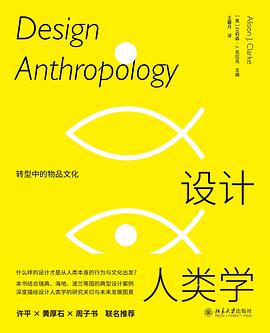
设计人类学
是什么让一件产品具有文化标签性?
来自瑞典的宜家家居是怎样做到征服中国市场的?
为何具有创新意识的设计师常常花费更多的时间去观察不同人的行为而不是埋头设计?
面对复杂多变的物质世界,“用户”(产品使用者)个性化、社群化的使用体验使设计师更加重视借用其他社会学科的理论,如人类学,来开拓自身的设计视野。这些和“用户”有关的物品文化问题都属于设计人类学关注的范围。
本书所汇编的文章都出自国际设计理论界著名学者之手,主要从设计人类学的角度,将设计相关的社会现象通过人类学的视角和方法纳入研究范畴,例如对澳大利亚原住民的生活行为、习俗等的调查,对海地金融扫盲设计的研究,对波兰蕾丝传统手工艺在商品社会“复活”的研究等,深化针对具体人群日常用品的设计实践,丰富设计物品本身的文化内涵。
设计学科和其他社会学科的交互研究,在国际设计学界已比较成熟,但在国内设计学界还处于起步阶段。希望本书能够有助于国内设计研究者和从业者开阔专业视野,思索什么样的设计才是从人类本身的行为与文化出发,同时也为人工智能的新技术未来祛魅。
-

Hanatsubaki and Nakajo
Hanatsubaki is a special, limited-edition magazine that Shiseido, the cosmetics giant, publishes monthly exclusively for its customers. Ever since it began in 1937, this highly sought-after magazine has taken the lead when it comes to Japanese art, fashion and culture, in both its influence and reach. The quality of its design and the content of its pages has inspired designers and other creative professionals for generations. Incredibly, for the past forty years this great magazine has been the brainchild almost completely of Masayoshi Nakajo, the universally recognized art director and graphic designer. This award-winning, seventy-five-year-old professional is still art directing the magazine. Like a great symphony orchestra conductor, Nakajo gathers the best in the field, and through his direction, he inspires these players to create a magazine that is harmonious and provocative at the same time. Nakajo has selected the best of the best for this book, featuring a revealing look at Japanese fashion, art, and culture over the last four decades. -
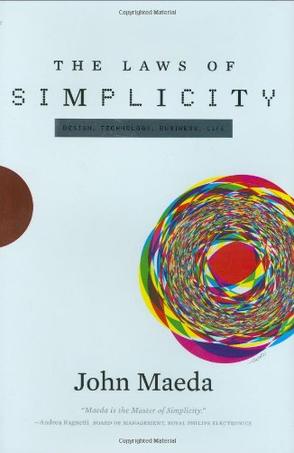
The Laws of Simplicity
Finally, we are learning that simplicity equals sanity. We're rebelling against technology that's too complicated, against DVD players with too many menus, and software accompanied by 75-megabyte "read me" manuals. The iPod's clean gadgetry has made simplicity hip. But sometimes we find ourselves caught up in the simplicity paradox: we want something that's simple and easy to use--but also does all the complex things we might ever want it to do. In The Laws of Simplicity, John Maeda offers guidelines, ten laws for balancing simplicity and complexity in business, technology, and design--for needing less and actually getting more. Maeda--a professor in MIT's Media Lab and a world-renowned graphic designer--explores the question of how we can redefine the notion of "improved" so that it doesn't always mean something more, something added on. Maeda's first law of simplicity is "Reduce." It's not necessarily beneficial to add technology features just because we can. And the features that we do have must be organized (Law 2) in a sensible hierarchy so users aren't distracted by features and functions they don't need. But simplicity is not less just for the sake of less. Skip ahead to Law 9: "Failure: Accept the fact that some things can never be made simple." Maeda's concise guide to simplicity in the digital age shows us how this idea can be a cornerstone of organizations and their products--how it can drive both business and technology. We can learn to simplify without sacrificing comfort and meaning, and we can achieve the balance described in Law 10. This law, which Maeda calls "The One," tells us: "Simplicity is about subtracting the obvious, and adding the meaningful." -
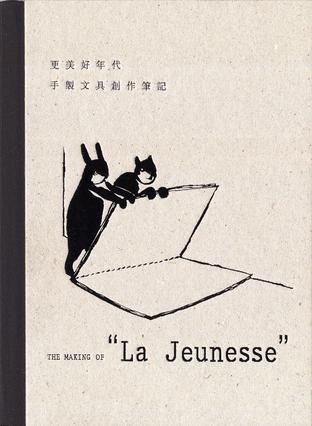
更美好年代──手製文具創作筆記
"La Jeunesse"延續五十年代香港文具生產技術及設計傳統,以舊式機械及手工出產貼近現代香港生活的風格文具。本書分上下兩部分,第一部分為"La Jeunesse"主理Benedict Leung的訪談,娓娓道出發人深省的設計概念及對手工技術追求;第二部分是漫畫家智海的插畫演繹,繪出文具生產的各項工序細節。 -
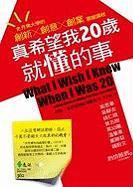
真希望我20歲就懂的事
作者希莉格主持「史丹佛科技創業計畫」(STVP)多年,是非常成功的創意與創業導師,專門教導大學生(特別是以當工程師為志向)如何規畫未來及創業。幾年前當她的兒子快要上大學時,她回想起自己讀大學和初入社會的挫折與經驗,不禁希望當年20歲時有人能提點她,於是與兒子分享這些寶貴心情。後來她對一群史丹佛學生分享這些觀察和領悟,把演講題目訂為「真希望我20歲就懂的事」,引發熱烈迴響與共鳴,並應邀到全球發表演講,最後決定將她的豐富經驗和創意課程寫成這本激勵人心的精采著作。 希莉格說,每個人20歲時都會有茫然面對未來、不知何去何從的強烈焦慮感,其實你應該欣然接受這種不確定,不確定才是激發創新的火種,也是向前邁進的重要力量。最有趣的經驗往往發生在偏離既定道路、挑戰傳統假設、從失敗錯誤中看出全新契機的時候! 誰說南極不能賣比基尼?誰說餐廳不能賣蟑螂壽司?蘋果電腦的賈伯斯就會告訴你,被開除是他這輩子最棒的一件事,讓他展開人生最富創造力的一段時光!其實不管你是20歲、30歲、40歲甚至50歲,只要願意跳脫人生框架、勇敢嘗試失敗、以健康的心態挑戰所有「不可能」、把握每個大放異彩的機會,就會帶來無窮的可能性! -
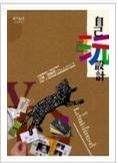
自己玩设计
設計當紅! 在美感經濟當道的今日,任何物品都不能只求功能性,還需具備設計感。設計與每個人的關係,也愈來愈緊密。 「設計,是人們可應用的藝術」,在這樣的想法下,馬里蘭藝術學院平面設計研究所的師生完成了這本Amazon暢銷書。透過本書,人人都可以玩設計,成為自己的生活設計師。 本書提供簡單的設計概念、步驟、範例,引領讀者在生活中玩設計,設計的對象包括:T恤、記事本、書、名片、CD與DVD包裝、邀請卡、標誌、背袋、牆壁圖案、傳單、禮物包裝……等,十分豐富實用。 設計是包裝想法、使之公開的工具。懂得運用設計工具的人,能化知識和概念為有形事物。這種讀寫能力的動態模式,可以回溯到個人閱讀和認識外在世界的能力。當你學著架設自己的網站、編輯自己的電影或出版自己寫的書時,你會對每天看到和讀到的媒體,更具批判力,更能意識到創造一個最高水準的媒體,所需要的創意技巧和能力。 這本書是由馬里蘭藝術學院(Maryland Institute College of Art,MICA)平面設計所的師生合作出版的,書中大部分作品是師生們的創作,另外,有些客座講師和我們訪問過的獨立設計師也提供了作品。許多馬里蘭藝術學院的朋友也分享了他們的作品,扮演模特兒及繆斯女神。 這個集體創作計畫,本身就是民主過程的具體實踐,它讚頌做為大眾傳播媒體的平面設計,並認為平面設計應該讓每個人都能輕易接近。擁有出版能力,是自由社會人民所擁有的關鍵權利之一。在本書中,我們提供可能的工具和想法,希望將設計提升為一種共通的語言。